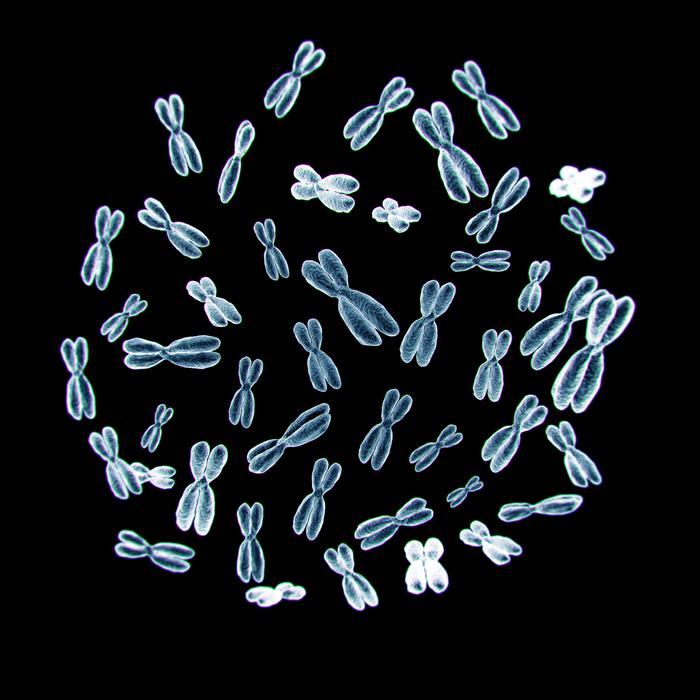An international consortium of scientists has made significant strides in deciphering the complex mechanisms that govern gene expression throughout the human genome. Their groundbreaking research delves into the intricate world of cis-regulatory elements (CREs), which are crucial DNA sequences that play a pivotal role in the transcription of genes. This study is expected to enhance our understanding of how these elements operate, contribute to cell-specific gene expression, and their implications in various health conditions.
Cis-regulatory elements, which encompass enhancers and promoters, are fundamental components in the orchestration of gene activity. They dictate the timing and location of gene expression, influencing numerous biological processes. Despite previous knowledge regarding their significance, researchers faced significant challenges in comprehensively studying the activity of these elements on a large scale. Dr. Fumitaka Inoue, a co-first author of the study, emphasized the complexity of the human genome, noting that it harbors an extensive array of CREs. Mutations within these regulatory regions are believed to be significant contributors to various human diseases and play a role in evolution.
To tackle the challenge of analyzing CRE activity extensively, the research team employed an innovative tool known as the lentivirus-based massively parallel reporter assay, or lentiMPRA. This advanced technology allows for the simultaneous examination of thousands of CREs by leveraging unique DNA barcodes that can track their activity efficiently. In applying this framework, the researchers scrutinized approximately 680,000 candidate CREs across three key cell types: hepatocytes from the liver, lymphocytes (a kind of white blood cell), and induced pluripotent stem cells, which are artificially generated from typical body cells.
The findings of this extensive study revealed several crucial insights into the activity of CREs across the different cell types analyzed. Remarkably, close to 41.7% of the evaluated CREs demonstrated activity. When the researchers examined promoters, which initiate the process of gene transcription, they discovered that these elements are influenced by the orientation of their sequences but lack specificity to individual cell types. In contrast, enhancers, responsible for amplifying gene transcription, exhibited activity independent of orientation, displaying significant cell-type specificity.
In addition to characterizing the activity of CREs, the study employed advanced machine learning models designed to predict CRE regulatory activity based on the large-scale experimental dataset obtained through lentiMPRA. Among these models, MPRALegNet emerged as the most accurate and effective for predicting the regulatory activities of various DNA sequences. Its predictions aligned closely with experimental observations, yielding results that in some cases performed comparably to direct experimental replicates. Moreover, MPRALegNet was also capable of identifying essential binding motifs of transcription factors, which are short DNA sequences instrumental in determining CRE activity, thereby enhancing our understanding of the factors that drive cell-type-specific gene expression.
One of the noteworthy conclusions drawn from the research is the identification of specific transcription factor motifs, such as HNF4 and GATA, which were found to be critically important for enhancing activity in hepatocytes and lymphocytes, respectively. This understanding opens avenues for further exploration into how distinct regulatory elements function across various cell types and how they may contribute to the manifestations of human diseases.
By allowing researchers to accurately quantify enhancer activity, this study lays the groundwork for investigating the molecular mechanisms underpinning human diseases. Future research endeavors are set to focus on applying the learned lessons from this study to explore genetic polymorphisms—variations in DNA sequences that influence individual traits and susceptibility to various diseases. This approach could potentially unravel further layers of complexity in gene regulation and disease etiology.
Despite recent advances, the nearly complete sequencing of the human genome has revealed that a significant portion of its functional regions remains elusive. With the insights gleaned from this research, a vital connection between DNA sequence information and its functional roles can be drawn, potentially catalyzing breakthroughs in understanding various biological phenomena, including the intricacies of human diseases and the trajectory of human evolution.
The research also contributes to the broader scientific community by providing a publicly accessible database that catalogs the activity of CREs. This valuable resource, hosted on the ENCODE portal, stands to benefit researchers worldwide who are interested in genomics and personalized medicine. By merging extensive experimental data with innovative machine learning techniques, this work establishes a strong foundation for subsequent investigations in these fields. Furthermore, the utilization of tools like lentiMPRA alongside MPRALegNet will empower scientists to navigate the complexities of gene regulation more effectively while exploring the vast, largely uncharted territories of the human genome.
As the field of genomics continues to advance rapidly, studies such as this one are critical in paving the way for future discoveries that may enrich our understanding of genetic underpinnings in health and disease, significantly enhancing our pursuit of innovative therapeutic strategies.
The implications of this study extend far beyond academic curiosity; they touch on the very fundamentals of human biology and promising medical advancements. By unlocking the regulation of gene expression at a molecular level, scientists may indeed pave the path toward revolutionary health interventions, potentially transforming the tapestry of modern medicine.
Understanding the intricate interplay of cis-regulatory elements, as detailed in this significant research, is essential for capturing the comprehensive picture of gene activity across varied biological contexts. With the landscape of genetics rapidly evolving, the continued exploration of these elements promises to reveal new paradigms in our understanding of life itself, characterized by unprecedented precision and insight.
In conclusion, the research conducted by this international team not only contributes to the current understanding of gene regulation but also sets the stage for future inquiries that will likely challenge existing paradigms. Their innovative methods and comprehensive analyses highlight the potential for a transformative shift in the vital fields of genomics and personalized medicine. The scientific community eagerly anticipates the ramifications and advancements that will stem from this foundational work, as it holds the potential to redefine our approach to understanding and treating human diseases.
Subject of Research: Cells
Article Title: Massively parallel characterization of transcriptional regulatory elements
News Publication Date: 15-Jan-2025
Web References: ENCODE portal
References: doi.org
Image Credits: ASHBi/Kyoto University
Keywords: Genetics, Gene expression, Gene regulation, Human biology, Eukaryotic genomes, Molecular genetics, Genomics, Personalized medicine





